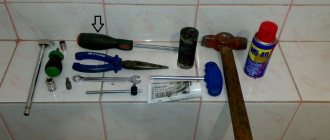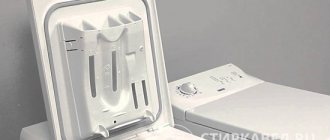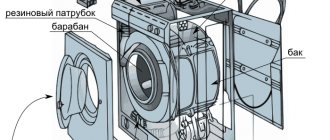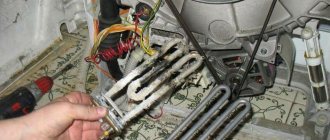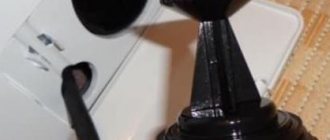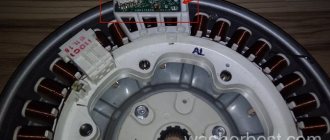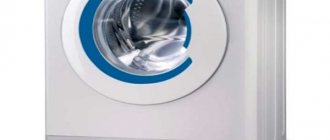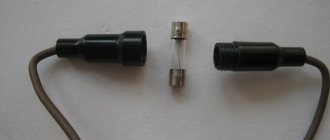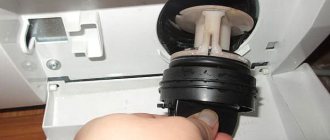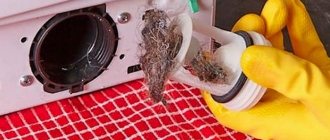It is advisable to clean the drain filter of your Zanussi washing machine as often as possible to prevent damage to the pump. In practice, cleaning takes no more than 15 minutes and does not affect important components, so manufacturers advise doing it yourself, although in the instructions, Zanussi designers recommend contacting a service center.
Filter cleaning should be done at least once a season. If, after finishing washing, lint, coins or any other debris is visible in the drum, then you need to clean it immediately. Small objects clog the pump, impeller and damage the washing machine. If after draining the water remains in the tank, a rumble and unusual noise is heard during the spin cycle, and the laundry smells unpleasant, then before calling a professional, you need to eliminate the possibility of a blockage. In the latest SMA models with a self-diagnosis function, the corresponding error code EF1, EF2 appears on the display. There is no point in restarting the machine, it will only make the problem worse.
How to clean the inside of a washing machine?
To carry out internal cleaning, you need to pour acid into the powder tray and run the machine on the highest temperature setting. Acid not only actively corrodes plaque, but also perfectly cleans the drum and removes unpleasant odors. You need to calculate the volume of the product from the volume of the drum per 1 kg of 20-30 g of acid.
Interesting materials:
How to smooth a leather sheepskin coat? How to iron a leather jacket? How to smooth a leather coat? How to iron a polyester jacket? How to smooth a faux fur coat? How to smooth eco-leather products? How to distinguish a gander from a goose? How to distinguish hydrangea varieties? How to unfold a Puma sofa? How to place photos on the wall?
conclusions
- Cleaning the drain filter of a washing machine is quite simple; for this you do not need to pay a technician from 1,500 rubles.
- It is necessary to clean if strange sounds are heard during draining and spinning, or better after each washing of duvets and fleecy items.
- If the plug does not budge, you should not be too zealous so that you do not have to disassemble the car. Just tilt it 45 degrees away from you and tap on the lid.
- To avoid clogging, you need to check the pockets before washing, check that the buttons are securely sewn on, fasten the buttons and tie the laces. Do not wash rubber-based rugs or clothes with a large number of sewn elements. Feathers, which easily get stuck in the impeller, cause a lot of problems.
Why does a washing machine need a drain filter and why does it need to be cleaned?
For a Zanussi washing machine, this unit is very important. It stands in the way of dirty water from the tank to the drain pump, which pumps it out. The filter prevents all kinds of debris from getting into the pump and causing it to fail.
What kind of debris could be in the water? This is lint, wool and hair that is always found in dirty laundry. In addition, small objects can accidentally get into the tank, and buttons, rivets, rhinestones, etc. sometimes come off from clothing.
All debris accumulates in the drain filter. If it is not removed from there in time, a blockage will form. This causes serious problems:
- The water does not drain well, and over time the drain stops functioning altogether. In this case, the pump wears out and quickly fails.
- Some of the debris from the filter can get into the pump and simply break it (jam the impeller or damage its blades).
- Even if the clog does not reach such a scale as to harm the pump, it can cause an unpleasant odor from the washing machine. This smell is transferred to the laundry during washing.
[custom_ads_shortcode1]
Where is the filter on front loading machines?
First, let's figure out where the drain filter is located on the Zanussi washing machine. If you have a front-loading model, then just pay attention to the bottom of the front wall. There is a long panel called the service or technical hatch. It's easy to open.
- Use a screwdriver to pry up one of the edges.
- We release the latches.
- We remove the door.
Attention! Do not forget about safety precautions and during any repair operations, disconnect the unit from the power supply, water supply and sewerage.
It's better to stop there. If you start to unscrew the filter itself, water will flow out of the hole, and a flood cannot be avoided. We will talk about further actions, preparations and precautions below.
What to do if the filter leaks after cleaning
It happens that when checking for leaks after cleaning the filter, it leaks. Or water begins to seep in after one or two washes. There are 3 reasons for the leak:
- The filter is inserted unevenly or is loosely screwed in . The part must be inserted straight to avoid movement along the thread. And also tighten it more tightly, fixing the filter. But this must be done carefully. Plastic threads can be easily stripped if you press too hard. If there is a leak, unscrew the filter, insert it straight and tighten it again. Do not forget to place a rag or a container to collect water before removing it.
- Gasket defect. Tight contact of the filter with the socket is ensured by a rubber gasket, as in taps or hoses. It may dry out over time or become damaged if you remove the filter carelessly or clean it with a sharp tool. To eliminate a leak, you need to change the gasket, when possible, or the entire filter, if sealing rubber bands are not sold separately.
- Damage to thread or filter. The filter or the walls of the cochlea are damaged if the part is removed or unscrewed by force. The thread on the snail filter or glass can be torn off if you tighten the plug with significant force. In both cases, the contact becomes not tight enough to hold water. Replacing the filter or the “volute and filter” pair helps to get rid of leaks in such situations. If you can’t handle it yourself, call a professional.
Powder container
The detergent drawer also needs regular cleaning. Particles of detergent remain on the walls of the tray, and impurities contained in tap water also settle here. In addition, mold appears very quickly in a humid environment. All this harms not only the machine, but also things and the health of household members.
The powder receptacle must be rinsed and dried after each use of the washing machine.
If you follow the rules and constantly rinse the dispenser, this will be enough to clean it. If the cuvette is not washed for a long time, it will be more difficult to remove the deposits. You will need to soak the container in a citric acid solution or use vinegar and soda. When you can’t remove hardened powder using folk remedies, you can buy a special cleaner for plumbing fixtures. The concentrate is used according to the instructions.
If you clean the filter in your washing machine in time, you can avoid many problems. Even a small clump of hair can clog a pipe or hose, block the pump impeller, or cause pump failure. All this will quickly affect the operation of the unit - an error will appear on the display, the drainage will stop, or the machine will not start the wash.
Why cleanse?
It is to prevent many breakdowns that it is necessary to regularly clean the garbage filter from accumulated dirt. The manufacturer Zanussi strongly recommends carrying out this procedure every three months, and if woolen or shedding items are washed, extraordinary cleaning is required. More serious reasons for unscheduled cleaning of the drainage system will be the following signals:
- no drainage, full tank of water at the end of washing or wet laundry;
- a corresponding error appeared on the screen;
- Washed laundry has an unpleasant musty smell.
Restarting the machine will not eliminate the listed troubles. Moreover, by continuing to operate a dirty machine, it is easy to get the rubber gasket tightly “stuck” to the volute and complicate the filter replacement. Moreover, unscrewing the part and cleaning it is not at all difficult.
Description of the cleaning process
The filter cleaning process also differs for different types of machines. For Zanussi models with top loading, the procedure does not require preparation: you just need to pull out the trash container according to the scheme described above, remove all the contents and rinse under strong water pressure.
With front automatic machines the situation is more complicated. Owners will have to act like this:
- slightly tilt the body of the machine back;
- place a container under the drain hole to collect water and cover the surrounding area with rags;
Important! It is not recommended to clean the filter immediately after the end of the cycle, as the water will not have time to cool down and you can get seriously burned!
- remove water through the emergency drain hose located next to the filter (usually bright red or orange);
- unscrew the filter plug by turning the part body to the left half a turn;
- If you can’t remove it by hand, you need to treat the surfaces and joints with WD-40 universal cleaner.
After successful removal, we proceed to directly clean the filter. First, we take out all the dirt from the body, and then we erase scale and rust from the walls and ribs. In case of severe contamination, it is recommended to keep the spare part in water with the addition of citric acid in proportions of 100 g per 1 liter. At the same time, it is recommended to pay attention to other elements of the drainage system and rid the volute, pump impeller, pipes and hoses of debris. Finally, screw the filter back in and close the technical hatch.
Removing dirt from the bottom of the tank
To clean from dirt, you need to run a standard washing program, adding any cleaner to the dispenser: citric acid, bleach, vinegar, or a special store-bought product. The cycle should last at least one and a half hours, the water should warm up to 75-95°C. It is important that the drum is empty.
Then you should rinse the washing machine two or three times. To do this, run a short wash program or the “Super Rinse” option. This is necessary so that the detergent, along with the soaked dirt and pieces of limescale, leaves the machine.
When using household chemicals for cleaning, strictly follow the dosage - large quantities of concentrate can corrode some parts of the washing machine.
In addition, you can clean the inside of the drum manually. The algorithm of actions will be as follows:
- wet a soft sponge or cloth;
- wipe the drum walls with a wet cloth, moistening the metal surface;
- dip the sponge in detergent (special powder or gel);
- treat the surface of the drum, focusing on the plastic “ribs”, joints and edges;
- close the hatch door. Leave the soapy drum to “soak” for one hour;
- Use a dry cloth to remove dirty foam;
- Rinse the machine by running any washing program.
Don't Skimp on Standard Cleaning
An integral stage of a comprehensive washing machine cleaning is washing the garbage filter and drain hose. Of course, it’s even better to touch the pump, pipes and pump impeller. It is in the drainage system that all the debris that gets into the drum accumulates, so special attention must be paid to cleaning it.
To clean the garbage filter:
- turn off the power to the Zanussi washing machine, turn off the water supply tap;
- cover the floor around the machine with unnecessary rags;
- prepare a basin to collect water;
- remove the technical hatch door, having dealt with the latches;
- find the black plug of the “trash can”;
- place a basin under it;
- turn the filter from right to left one turn, drain the water;
- pull out the filter element;
- wash the “spiral” in a warm soapy solution. If necessary, you can soak the filter in water with the addition of citric acid;
- clean the seat from dirt. Using a damp cloth, remove all debris stuck to the walls.
It is advisable to immediately clean the drain pump and impeller. To do this, Zanussi should be placed on the left side (it is important not to place the machine on the right side, otherwise the water remaining in the dispenser may flood the control panel and lead to the “tidy” shorting). The next steps are:
- Use a flashlight to illuminate the bottom and find the pump;
- unscrew the impeller from the pump;
- remove tangled hair, threads and other debris from the blades;
- clean the pump itself and the volute from dirt deposits;
- fix the impeller in place, return the machine to a vertical position.
Be sure to pay attention to the drainage hose. The corrugation should be unhooked from the siphon and the body of the machine and washed under running warm water. If necessary, you can soak the drain hose for 30-50 minutes in a citric acid solution to ensure that the stuck-on dirt is washed out from the inside.
Some models of Zanussi cars have an inlet filter. It is located in the inlet hose and serves to purify the water entering the washing machine. It is on this mesh that the main “impact” falls; all impurities settle there. That's why it's so important to wash it regularly.
To clean the inlet filter, you need to turn off the water supply tap, disconnect the inlet hose and remove the nozzle with pliers. You can remove plaque and rust with a regular toothbrush and soapy water.
What activities does a complete cleanup include?
Systematic and comprehensive care is important when caring for your washing machine. There is no point in washing only the powder receptacle once a month - with this approach it will not be possible to achieve the desired effect. It is important to clean the machine regularly and completely.
All housewives, after each use of the equipment, are recommended to:
- wipe the walls of the drum dry from droplets of water, remove any soap deposits remaining inside;
- remove the detergent container and rinse it in warm water;
- remove water and dirt remaining in the hatch door cuff;
- Wipe the body of the machine with a dry cloth.
“Superficial” measures must be carried out every time after using the washing machine. In addition, more “deep” procedures are periodically necessary. Every three months you need to clean the garbage filter, and every six months you need to clean the “insides” of the machine from dirt and scale.
Twice a year, be sure to carry out a comprehensive “cleaning” of the Zanussi washing machine using special products.
Full washing of the machine from dirt and scale involves turning on a “idle” wash, adding a special product to the dispenser or drum. You can choose the cleaning composition at your discretion - use a store-bought concentrate or budget life hacks.
When purchasing a product in a store, be sure to look for o. Compositions are sold that prevent the appearance of limescale - they are not suitable for comprehensive cleaning of the machine.
Among the folk remedies, baking soda, vinegar and citric acid have proven themselves to be excellent in the fight against scale. The effect of their use is comparable to the result after using household chemicals.
The dosage of the cleaning product is prescribed on the packaging. You can't fill the pot. An excess of “chemicals” can damage the rubber elements of the machine. The composition is added either to the cuvette or to the drum - all in accordance with the instructions. Then all that remains is to start the “idle”, high-temperature cycle and wait for the end of the program.
While the machine is cleaning itself, it is better not to leave it. If there is too much scale inside, a piece may break off and get stuck in the drain system, threatening the “life” of the machine. Then the washer will hum, and you may hear knocking and crackling noises. In this case, you must immediately stop the program and clean the debris filter. The cycle can then be resumed.

